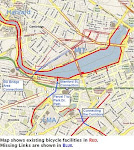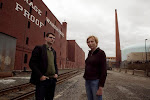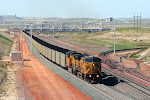Some Perspective: Air Travel = the Least Used Transportation Mode in the US!

 Here’s something to think about: of all the modes of travel in our great land, air travel is a tiny percentage of the overall modal split.
Here’s something to think about: of all the modes of travel in our great land, air travel is a tiny percentage of the overall modal split.Every day, there are 4 people riding on the New York Subway for ever person on a flight over the US. Nationwide, rail passengers (transit, regional, and long distance) far outnumber air passengers.
Add auto passengers, and the percentage of travelers flying becomes microscopic!
Worldwide, cars and trucks are the terrorist's preferred modes of mass murder.
Given all this, all the talk and so much of the funding still goes to the air transport mode. Does it make sense as policy?
Back to the Question at Hand
Whether or not it makes sense to focus the majority of concern on the minority travel mode, the question at hand is what went wrong and what should we do.
With the recent thwarted attempt to blow up a passenger jet, it is clear that our security measures only go so far. So, is this a failure of the agencies that are supposed to protect us from terrorists? And do any of the new measure close the security gap?
Whose Failure Was It?
It’s too soon for a definitive answer, but the following is clear:
- the perpetrator was known as a potential threat, but was not on the “no fly” list. Still, they were planning to interview him when he arrived in Detroit based on information compiled. Just a little late on putting 2 + 2 together.
- instead of hiding the materials in a shoe or in a carry-on bag, he hid them in his clothing. Again, a terrorist is one step ahead of us. From what I see, Homeland Security is always adding measures to prevent the last attack (millions have taken off their shoes because of one attempted attack) but seems incapable of getting one step ahead of the terrorists.
- beginning with 9/11, there have been 6 incidents on individual planes now. The score is 3-3. What was common to the victories over the terrorists? Passengers and/or crew took action and thwarted the terrorists.
Will the New Measures Work?
To me, it seems the new measures are a knee-jerk reaction that is still one step behind the terrorists.
Why remain seated only during the last hour of the flight? Pam Am 103 was blown up over Lockerbie early in the flight. Will they force passengers to remain seated for entire flights?
What good are full-body scans? We know from prison security measures that even strip searches don’t reveal contraband when it’s hidden in body cavities. If the terrorist is going to die anyway, why not hide the bomb inside his body? That way you can fool the scanners, the dogs, and the air sprays.
Technology alone will not protect us, no matter how great it is. Think of this: Osama Bin Laden was a structural engineer; the Christmas day terrorist was an engineer. Americans, beginning with many in Homeland Security, are below average in their understanding of science and technology. The terrorists will win the battle, IF we depend only on technology.
Well, Then, What to Do?
Here my approach to a more effective policy regarding air travel security:
- Don't make unnecessary enemies with your foriegn policy! If no one hates you, then no one will want to kill you. Good idea in theory, but the world is complex and the influence of the US is worldwide, so it is virtually inevitable that somewhere someone hates the US. Nevertheless, why make unnecessary enemies with your foreign policy!
- Listen to the experts. No other nation surpasses Israel in its experience dealing with terrorists. Here's what their experts say:
Lesson 1: Technology alone won’t work. (Didn't I just say that?) The terrorists have cleaver engineers and scientists that can figure out how to overcome our newest mousetrap.
Lesson 2: Profiling and interviewing must complement technology. In short, it pays to ask travelers about their itinerary and purpose. And then ask them again. Pick out individuals by behavior, originating country, or by recently visited nations. We need some “Lie to Me” trained observers watching the video feed. - Change how we travel. We depend too much on commercial flights that anyone can board. Responsibility is split in a perculiar way between government (security, traffic control, regulations) and the private sector (airlines). Someone has to say it: It's not working!
What to do? I say don’t criticize the executives in the corporate jets. We need to shift more air travel to private, corporate and charter flights – smaller planes (lower kill count, less damage when crashed as a weapon) and harder for an outsider terrorist to fit in. - Proven method: Focus on the only proven method of stopping terrorist in flight: on-board intervention. Have trained and armed marshals on all flights. Mix uniformed marshals with others in plain clothes.





